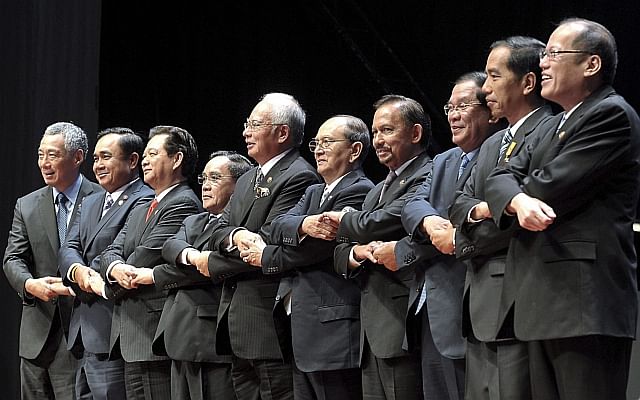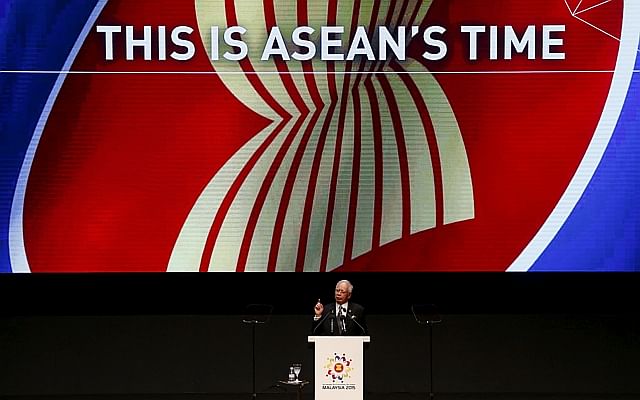Leaders of the 10-member Asean regional grouping met in Kuala Lumpur and Langkawi on Monday to take stock of the grouping and discuss issues of concern. Here are six highlights from this week's Asean Summit:
1. Asean Community on track

All 10 countries of Southeast Asia that are in the grouping have implemented more than 90 per cent of their commitments towards having a more integrated region, and are on track to declare an Asean Community by December 2015. This would commit them to working closer together in a wide range of economic, political and socio-cultural issues.
Malaysian PM Najib Razak, who chaired the summit meeting, said on Monday night: "This is a very significant milestone in the history of our organisation, and we must ensure that every effort is expended in pursuit of that goal. The rewards for all our peoples, as we have discussed, are too great for us not to seize this opportunity wholeheartedly."
2. Moving cautiously on the South China Sea

China's reclamation activities in the Spratly Islands - parts of which are claimed also by Asean members Brunei, Malaysia, the Philippines and Vietnam - have caused concern in recent months, and was an issue raised by several members during closed-door meetings. Mr Najib stressed the importance of resolving disputes and differences through peaceful means, and in line with international law.
Singapore Prime Minister Lee Hsien Loong also said that if not properly managed, tensions may well escalate and lead to incidents. He joined his counterparts in calling for the speedy conclusion of a Code of Conduct with China to better manage the dispute, but told Singapore reporters: "To get it done sooner, all the parties have to agree to get it done sooner. And it is not clear that all the parties want to do it as soon as possible."
3. Strong condemnation of extremist terrorism

In light of the threat posed by the Islamic State in Iraq and Syria (ISIS), which over 500 Southeast Asian nationals have gone to fight for - and many more appear to have been influenced by - Asean leaders adopted the Langkawi Declaration on the Global Movement of Moderates. The movement of moderates initiative was mooted by Malaysia and leaders agreed to step up cooperation to promote efforts to drown out extremist voices, and conduct a range of activities including inter-faith dialogues and exchange of experiences on countering radicalisation and tackling the roots of extremism. Members also agreed to provide space and support to ground-up efforts to counter radical ideology and to amplify moderate voices.
4. People-oriented, people-centred Asean

A key point about the Asean Community is that it is not just about 10 leaders and officials travelling around the region for meetings, but about each of the region's more than 600 million people feeling they are bound together as Southeast Asians living in Asean. To this end, leaders adopted a Kuala Lumpur declaration on a people-oriented, people-centred Asean, in which they agreed to work together to tackle problems like poverty and narrow the development gap between and within Asean countries. They also pledged to step up exchanges between youth, civil society groups and businesses across the region, among others.
5. Responding better to disasters and climate change

The 7.8 magnitude Nepal quake drove home the importance of preparing for disasters and coordinating responses to it. But Asean leaders have long been aware that the region has been prone to natural disasters. On Monday, they adopted a declaration to strengthen Asean's resilience to disasters and climate change.
They will, among other things, accelerate investment in disaster risk reduction efforts and work with the public and private sectors as well as civil society groups to address a host of related issues - from the degradation of ecosystems to improving local governance, as well as strengthen their preparedness for the next major earthquake, tsunami or typhoon.
6. No common time zone, just yet

The various Asean capitals are split by time - Naypyitaw is on GMT +6.5, Jakarta, Bangkok, Phnom Penh, Vientiane and Hanoi are on GMT +7, and Singapore, Kuala Lumpur, Bandar Seri Begawan and Manila are on GMT +8. Malaysia had been pushing hard for an Asean common time zone to solidify the grouping's unity. It was a move Singapore had backed. But leaders were not able to accommodate this proposal just yet, and cited the challenges and adjustments that would have to be made.
Nevertheless, Malaysian Prime Minister Najib hoped members would eventually be able to accommodate a common time zone, which would be "yet another historic milestone in Asean regional cooperation and community-building".

